
views
X
Trustworthy Source
Cleveland Clinic
Educational website from one of the world's leading hospitals
Go to source
These bumps are caused by bone growths from osteoarthritis, and while you can’t make them disappear completely, you can take steps to reduce your pain, swelling, and discomfort. We’ll show you how to alleviate inflammation in your hands and get relief from arthritis bumps in no time.
Heat treatment
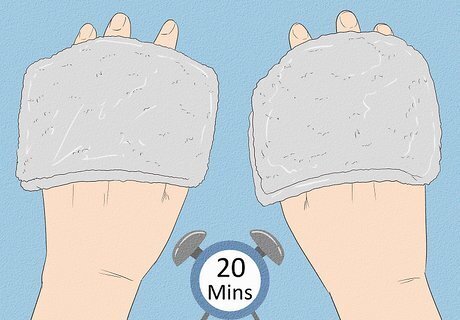
Set a warm washcloth on your fingers for 20 minutes. Heat is one of the easiest at-home ways to manage arthritic pain, since warmth boosts blood flow to help loosen up stiff finger muscles and joints. Wet a washcloth and microwave it for about 20 seconds to 1 minute to make your own heating pad. Alternatively, soak your hands in warm water between 92–100 °F (33–38 °C) for 20 minutes.
Ice packs

Hold a gel ice pack to your fingers for 20 minutes. This is a wonderfully inexpensive way to get some fast pain relief! Cold helps to numb your hands and reduce swelling to alleviate pain. If you don’t have an ice pack, try wrapping a towel around a bag of frozen veggies. You can even alternate between using hot and cold compresses to alleviate pain.
Over-the-counter pain medication

Try taking a common pain reliever like acetaminophen or ibuprofen. These over-the-counter medications can help you reduce pain from arthritis bumps in your fingers. Nonsteroidal anti-inflammatory drugs (NSAIDs) like ibuprofen (Advil, Motrin IB, others) and naproxen sodium (Aleve) also can help you reduce swelling so you can keep your joints moving comfortably. Doctors recommend acetaminophen (like TYLENOL, Ofirmev, and Mapap) first over NSAIDs, because acetaminophen has fewer side effects. Ask your doctor about the proper dose for your pain management plan. A typical dose might be up to 4,000mg.
Topical creams
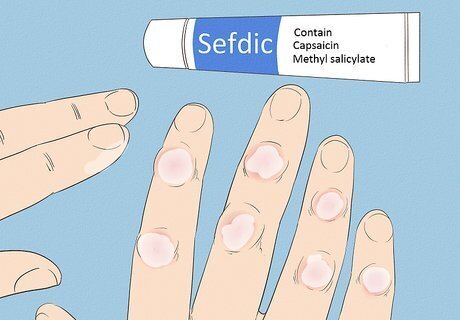
Apply pain relief cream to your fingers 3-4 times per day. Topical relief for arthritis bumps comes in a variety of creams, gels, lotions, and ointments that are easy to apply. Look for over-the-counter pain relief creams that include capsaicin and methyl salicylate. If you don’t tolerate oral pain relievers well, you can try out the FDA-approved topical NSAID called diclofenac gel. Follow the dosage and application instructions on the container.
CBD oil

Many people report that CBD oil helps them manage pain from arthritis. While you don’t have to worry about safety concerns with moderate CBD doses, studies are mixed on whether CBD oil is really effective. You can try taking CBD oil orally, topically, or even using it as a spray, but talk to your doctor first. You’ll want to make sure CBD won’t interfere with other meds you’re taking. Create a treatment plan with your doctor, and start with a low dose, taken at night. Only use CBD products that have a “Good Manufacturing Practices” (GMP) certification.
Splints and gloves
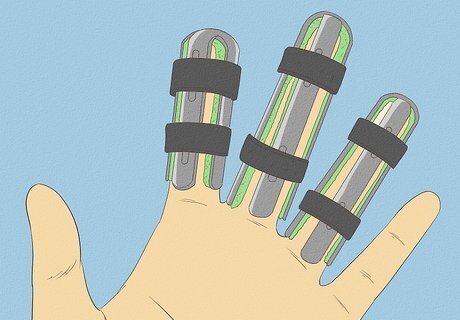
Wear a brace to support your finger joints and promote better alignment. Heberden’s nodes and Bouchard’s nodes are caused by irritation from cartilage wearing down, making bones rub together. Your joints deserve a break, and you can help them rest by wearing specially designed splints and arthritis gloves that you can pick up from your local drugstore or your doctor's office. The short period of immobility can protect your joints moving in ways that further inflame your arthritis bumps. Talk to your doctor about the type of brace you should use, and how long you should wear it. Dava Sobel Dava Sobel, Celebrated Science Writer and Health Educator Bumps on your fingers from arthritis can really hurt and make daily tasks difficult. But don't let the condition define your hands. There are ways to take control — whether it's specific finger exercises, losing some weight, medication, or splinting. Find what works for you. Listen to what your body needs and be proactive in caring for yourself. You can keep your hands nimble and reduce pain with the right adjustments.
Supplements

Try glucosamine, chondroitin, fish oil, SAM-e, or curcumin. If you’re looking for natural remedies for arthritis bumps, look no further! These popular supplements offer anti-inflammatory properties to soothe your joints. However, you shouldn’t substitute a full arthritis treatment with supplements. Talk to your doctor before you start taking any of these to make sure they won’t interact with any medications you’re taking. Glucosamine and chondroitin are components of cartilage, and they might reduce pain and swelling when taken together. A typical dosage is 500mg, 3 times per day. Fish oil contains omega-3-fatty acids that support joint health. Buy a fish oil supplement that contains at least 1 g of eicosapentaenoic acid (EPA) and docosahexaenoic acid (DHA) per dose. SAM-e (s-adenosyl-methionine) is an anti-inflammatory compound that naturally occurs in your body. A typical daily dose is 1,200 mg. Curcumin is the active, anti-inflammatory compound in the spice turmeric. A typical daily dose is 1,500 mg. Studies support glucosamine sulfate for pain relief in osteoarthritis of the knee, but more studies are needed to prove it’s effective on fingers.
Anti-inflammatory diet
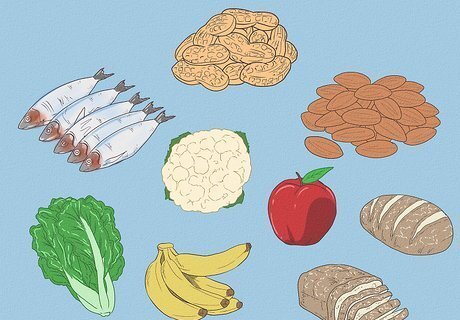
Start the Mediterranean diet to improve finger joint pain. The Mediterranean diet won’t just help reduce inflammation in your Heberden’s or Bouchard’s nodes, but it can also work to improve your overall health. Incorporate fish, nuts and seeds, fresh fruits and vegetables, olive oil, and whole grains into your diet to get plenty of omega-3 fatty acids, antioxidants, and healthy fiber. Aim for 3–4 oz (85–113 g) of fish twice a week. Try eating a handful of nuts daily. Get 9 servings of fruits and vegetables daily (about 1 cup or 110 g). Eat 6 oz. (170 g) of whole grains daily.
Exercises and stretches

Improve your finger joint function with easy movements. Exercises can strengthen the muscles around your joints so that you don’t lose finger mobility from your arthritis bumps. A physical therapist can help make sure you’re performing the movements correctly, but you can practice stretching your hands at home. If you can, perform multiple repetitions of each exercise on each hand: Try to touch each fingertip to the tip of your thumb, one at a time. Form a fist with your hand, then slowly relax it. Try to bend your knuckles all at once, then slowly release them. Bend your thumb across your palm, towards your pinky finger. Stop if you feel any pain.
Adaptive devices and rest
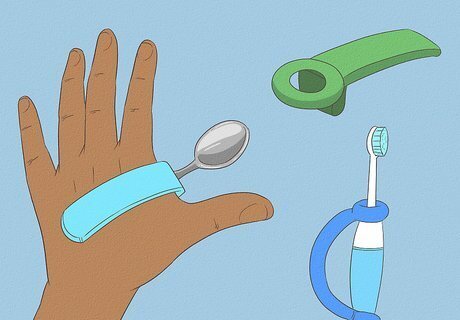
Use special tools and avoid movements that strain your hands. Adaptive devices help you reduce the effort on your hands so your joints can rest. They might include things like a wider handle for your toothbrush or special pen grips. When you start to feel your fingers getting tired or hurting, listen to your body. It’s okay to take a short break! For instance, use a jar popper to open a jar instead of twisting the lid. Swap out your regular utensils for ones with thicker, specially-designed handles.
Steroid injections
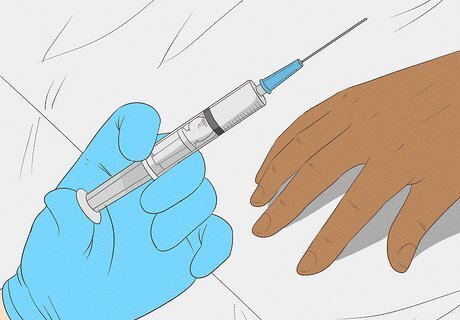
Talk to your doctor about corticosteroid or hyaluronic acid injections. Steroid injections can provide short-term relief for 4 to 8 weeks in cases of severe pain from arthritis bumps. If you opt for injections, your symptoms might get worse for 24 hours after treatment, but after 48 hours, you’ll start feeling the improvement. Studies show these injections are quite effective at treating osteoarthritis in knees, but studies are mixed about how effective injections are for osteoarthritis in hands.
Surgery

Arthritis bumps rarely need surgery, except in severe cases. If arthritis bumps severely impact your mobility, you can talk to your doctor about joint replacements and joint fusions. Joint replacements help you maintain full joint function with the help of an implant. Joint fusions relieve pain but will cause a loss of mobility. Consider low light laser therapy (LLLT) to reduce your pain and improve your movement. Just keep in mind studies haven’t definitely proven that this is effective for everyone.



















Comments
0 comment